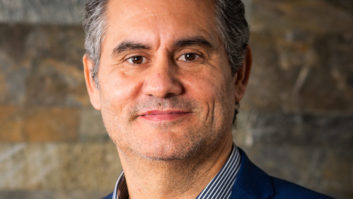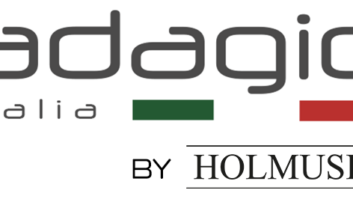Two key themes run through the responses of the manufacturers, installers, distributors and designers that Installation Europe spoke to for this survey of the Italian market. One is political unrest, which resulted in a snap election and the formation of a new government earlier in the year; the other is an economic situation that is anything but rosy. Not surprisingly, many people cite both as having a considerable negative effect on the Italian market.
Architect Giancarlo Marzorati is among those who believe that the political situation inevitably affects cultural, leisure and entertainment activities. He says: “Let’s hope the new government manages to give the trade’s entrepreneurs the necessary ‘injection’ of confidence.”
Marco Porro, general manager of Audio Pro Group (which also distributes lighting, video and control equipment brands), has seen a slowdown in some areas. He says: “The most dynamic market area is the conference and multifunction venue sector, particularly projects involving private companies, such as the new Mercedes-Benz centre in Milan, and local public organisations. However, even progress on confirmed projects has slowed or stopped in some cases. Although work proceeds in the private sector, the poor overall economic situation has also caused investment cutbacks in this area of the market.”
Ennio Prase of Prase Engineering reports slow uptake of conferencing, multimedia and automation in the institutional field, despite the same kind of technology giving great results in the corporate sector. “This is mainly due to the current political situation, which we hope will soon be sorted out,” he explains.
Giorgio Biffi, international sales director and company partner at pro-audio manufacturer Outline, comments that, although the category that’s driving the installation market at present may vary from country to country, it’s the private corporate sector that, generally speaking, is the most dynamic. “Fortunately, Italian politics affect us only marginally, as domestic sales account for just 20% of our turnover,” he says.
Antonio Faccioni, audio contractor division manager with pro-audio manufacturer and MI distributor FBT, adds: “Over half our brand sales are from foreign markets but, even though we don’t feel particular political repercussions, project times can nevertheless be very long, due to bureaucracy.”
Also confirming particularly positive sales for projects involving corporate private and institutional venues, as well as cruise liners, Alessandro Giorgi, general manager of lighting manufacturer SGM, explains that no less than 80% of the company’s products are exported. Recent prestigious applications include Palco 3 LED fixtures installed in the foyer of the futuristic Duna Tower office building, located a few yards from the Danube in the heart of Budapest.
Euroscreen sales manager Annalisa Orlando also believes that the political situation is having a negative effect on sales. She stresses that school and university funding is poor at the best of times, but under these conditions it is even worse as public bodies insist on increasingly extended payment schedules.
A hefty 65% of Euroscreen’s turnover is accounted for by export sales. As far as the domestic market is concerned, the home theatre market is expanding fast, as clients appreciate the added value of carefully designed and built products. “However, up until now, the professional sector has been our most important as far as sales figures are concerned, and it is the market area with the best growth potential, as it includes the likes of schools, universities and conference centres,” Orlando continues. “Unfortunately, due to limited budgets, screens are often considered unimportant accessories and installers offering turnkey packages for tenders spend as little as possible on them. This has accentuated the problem of Chinese competition.”
Willingness to adapt
Overall, how willing is the market to accept new technology? Inevitably, it depends who you talk to. Orlando observes: “There’s a lack of screen ‘culture’ in Italy – a lot of folk still project on walls – and, generally speaking, Italian clients are slow to adopt new technology. For example, whereas 16:9 is the top-selling format throughout the rest of Europe, the majority of the screens sold here are still 4:3, even if projectors have a 16:9 matrix.”
Porro, by contrast, finds that end users in his market are interested in implementing new technologies and, although price plays an important role in decision-making, new systems are often more cost-effective than old ones. Installers, however, are another story, he says: “Installers and electricians frequently offer resistance to IT-based systems, IP addresses, networks for transporting AV signals, and so on. It’s another world for many of them, but that’s precisely where the most important changes are taking place!”
Faccioni makes a similar observation. System designers, he says, are more receptive to new technology, whereas the majority of installers don’t take time to learn. “We therefore try to manufacture complete systems, already cabled and configured for clients’ specific requirements, rather than providing installers with software they wouldn’t be able to use to configure systems themselves.” Francesca Storaro, daughter of triple Oscar-winning cinematographer Vittorio Storaro, is a successful lighting designer, specialising in architectural lighting. Her work throughout Italy has included Palazzo D’Arnolfo di Cambio, San Giovanni Valdarno’s Castello Visconteo and Florence’s Palazzo Strozzi. Although stressing that lighting technology is still used too often just to see buildings, rather than help “describe” them, Storaro confirms that local authorities are increasingly using light as a language able to ensure key events and exhibitions have a greater impact, particularly on the media.
Marzorati, who has designed buildings ranging from multiplex cinemas and residences to offices and auditoria, comments: “Generally, clients willingly accept new ideas, but planning ahead often means having to consider what seem to be very high costs at the drawing board stage. A perfect example of this could be the adoption of digital in cinema theatres.”
Asked whether he believes audio technology should be heard but not seen, or thinks techno is beautiful, Marzorati says: “It’s obviously easier to create atmospheres on walls and ceilings free of speaker enclosures or truss bars, but intelligent inclusion of ‘naked’ technology can give interesting results, if a room has to have a spectacular look.”
What’s new?
So, what are the most significant new technologies for our interviewees? Faccioni states that digital technology still has the greatest impact on FBT’s market, with matrixes and evacuation systems ensuring ample system versatility and configuration features. “Our recent investments can be seen in the new modular integrated VA systems. These range from the smallest, the VAIS1000.2 – which features digital matrix, battery-powered amp, back-up batteries and back-up amp, and is EN60849-compliant and EN54-16-ready – through to the sixzone EAS6 to our VA4Z and VA8Z systems.”
Biffi highlights DSP as the most important recent innovation, but adds that, even though it might seem strange for the installation market, the most innovative top sellers from Outline’s product range are line arrays. Especially notable, he says, is the new Mini-Compass (Compact Polar Adjustable Sound System) which, thanks to its variable directivity, enables sound to be aimed at the audience and not the walls. This is fundamentally important in rooms with reverb problems. “This year, these systems, which feature on-board DSP, PWM amps and twin double reflective wave guides, have been installed in the Cairns Theatre in Australia and Tehran’s Azadi Theatre; two more are due to be installed in the Iranian capital.”
Convergence with IP technology is now a reality, according to Prase, so audio networking is increasingly widespread. “It’s now requested by clients, such as technical studios, who want to use networks to implement their projects.”
Prase reports significant progress as far as locations with particularly hostile acoustics are concerned: places of worship and railway stations.
“Larger churches are at an advantage in this case, as investment decisions are usually taken by people with technical experience. This is seen by the positive results achieved in the likes of Florence [see Solutions, page 55] and Milan cathedrals. Things are changing fast in the railway station sector, too, as large investments are being made in upgrades in public address and signage systems. We’re the official suppliers and one of the first new audio networking systems – including remote diagnostic facilities – is already up and running in Bologna.” The spread of different formats such as 16:9 and 2.35:1 is without doubt the most important innovation as far as Euroscreen’s business is concerned, leading to the need to design multi-format screens. In fact, says Orlando, the company’s most successful products include the DOUBLE FORMAT models.
Marzorati has no doubts that the technology that has had the greatest impact on his work recently is LEDbased lighting. “It’s truly revolutionary as far as light quality, consumption and versatility are concerned,” he says. He recently designed and presented Nitida seating for Parma’s Deko, which features a unique LED-illuminated glass back, which doubles as room lighting. Storaro agrees, acknowledging that LEDs have had a great effect on her modus operandi. She describes their key features for her work: “Above all, endless colour-generation possibilities, which are of great help to us designers. A single fixture is able to offer numerous monochromatic luminous possibilities, to show buildings’ character on a day-to-day basis, or enable them to ‘communicate’ by using colour for special occasions. LEDs also have the further advantage of compact unobtrusive dimensions, plus long lifespan, low maintenance costs, IR- and UV-free light, and safety, as they run at low voltages.”
For SGM too, the most significant recent market arrival was that of high-powered LED. Giorgi enthuses: “We’ve dedicated a specific website to our all-LED range of architectural lighting fixtures, conceived and designed to offer coherent solutions, where fixtures’ power and colour-generation facilities must be combined with the ability to fit unobtrusively into the surroundings, with the smallest possible footprint.”
Looking ahead, the fact that Milan has been chosen to host the Universal Expo in 2015 is also good news for the installation and systems integration trades. “As well as companies directly involved, the Expo will give the market on the whole a boost, as it will create a lot of induced business, due to the city’s infrastructures being upgraded to host the event,” Porro confirms. Mazorati believes the event will lead to exciting initiatives in many sectors, including the entertainment and leisure industries. However, he cautions: “Let’s hope the event doesn’t turn into a race to get the financing that’s up for grabs, with modest programmes and projects.”







